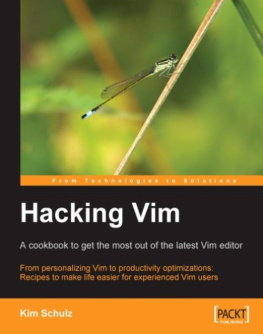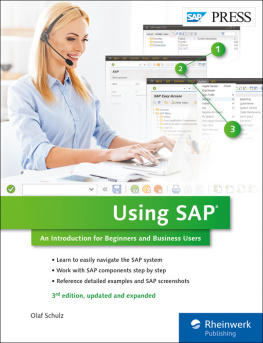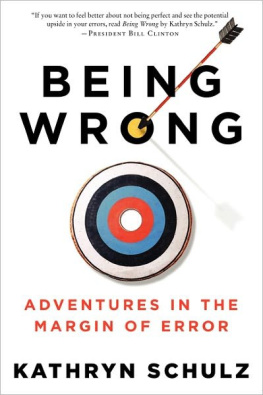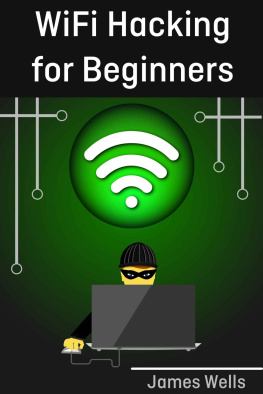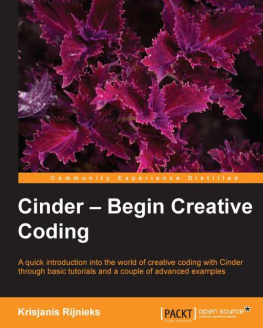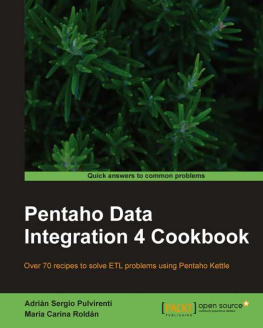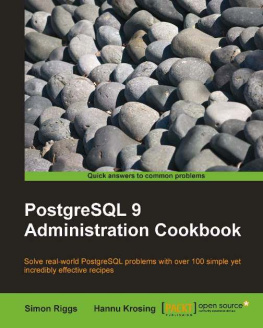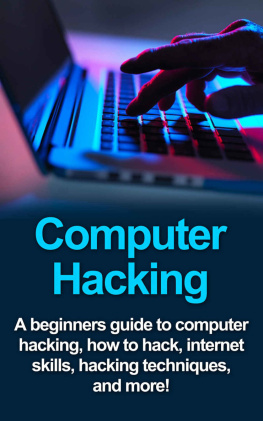About the Author
Kim Schulz has an M.Sc. in Software Engineering from Aalborg University in Denmark. He has been an active developer in the Linux and Open Source communities since 1997 and has worked with everything from translation and bug fixing to producing full-blown software systems.
This entire time, Vim has been Kim's editor of choice and it has been the first thing he installs whenever he sits at a new computer.
Today Kim works as a full-time software engineer at CSR Plc. developing software for the next generation wireless technologies.
A lot of Kim's spare time has been spent on developing the open-source CMS Fundanemt. This has lead to him now owning the web-hosting company Devteam Denmark that specializes in hosting and development of Fundanemt-based websites.
I would like to thank my girlfriend, Line, for letting me take the time to write this book. Without her positive attitude and help, I would never have got this book ready.
I would also like to add a great thank you to Bram Moolenaar, for developing the Vim editor, and making it what it is today.
About the Reviewers
Brian Jrgensen was born in 1982 in Northern Jutland, Denmark. His early interest in computers and programming on the Commodore 64 and later the PC resulted in him studying computer science at Aalborg University, from where he is about to graduate with a masters degree in software engineering. In the late 90s he found a great interest in the Linux operating system, which he has been using since. When he is not studying or working as a freelance developer, his spare time is spent working on Open Source software projects. He is one of the core developers on the Fundanemt CMS. His main interests are in programming languages, Internet technologies, and keeping a tap on a wide range Open Source projects. Brian has a personal website (http://qte.dk/) where he runs a blog and writes about his software projects.
James Eaton-Lee works as a Consultant specializing in Infrastructure Security and has worked with clients ranging from small businesses with a handful of employees to multinational banks. He has a varied background, including experience working with IT in ISPs, manufacturing firms, and call centers. James has been involved in the integration of a range of systems, from analogue and VOIP telephony to NT and AD domains in mission-critical environments with thousands of hosts, as well as Unix and Linux servers in a variety of roles. James is a strong advocate of the use of appropriate technology, and the need to make technology more approachable and flexible for businesses of all sizes, but especially in the SME marketplace in which technology is often forgotten and avoided. James has been a strong believer in the relevancy and merit of Open Source and Free Software for a number of years and wherever appropriateuses it for himself and his clients, integrating it fluidly with other technologies.
Kenneth Geisshirt is a chemist by education, and is a strong free-software advocate. He spent his Christmas holidays in 1992 installing SLS Linux, and GNU/Linux has been his favorite operating system ever since. Currently, he does consultancy work in areas like scientific computing and Linux clusters. He lives in Copenhagen, Denmark with his partner and their two children. You can find him at http://kenneth.geisshirt.dk/.
Preface
Back in the early days of the computer revolution, system resources were limited and developers had to figure out new ways to optimize their applications. This was also the case with the text editors of that time. One of the most popular editors of that time was an editor called Vim. It was optimized to near-perfection for the limited system resources on which it ran.
The world has come a long way since then, and even though the system resources have grown, many still stick with the Vim editor.
At first sight, the Vim editor might not look like much. However, if you look beneath the simple user-interface, you will discover why this editor is still the favorite editor for so many people, even today!
This editor has nearly every feature you would ever want, and if it's not in the editor, it is possible to add it by creating plugins and scripts. This high level of flexibility makes it ideal for many purposes, and it is also why Vim is still one of the most advanced editors.
New users join the Vim user community every day and want to use this editor in their daily work, and even though Vim sometimes can be complex to use, they still favor it above other editors. This is a book for these Vim users.
With this book, Vim users can make their daily work in the editor more comfortable and thereby optimize their productivity. In this way they will not only have an optimized editor, but also an optimized work-flow. The book will help them move from just using Vim as a simple text editor to a situation where they feel at home and can use it for many of their daily tasks.
Good luck and happy reading!
What This Book Covers
introduces Vim and a few well-known relatives; their history and relation to vi is briefly described.
introduces how to make Vim a better editor for you by modifying it for your personal needs. It shows you ways of modifying fonts, the color scheme, the status line, menus, and toolbar.
introduces some of the ways in which Vim helps us to navigate through files easily. It explains an alternative way for boosting navigation through files and buffers in Vim.
introduces you to features in Vim. It describes how to use templates, auto-completion, folding, sessions, and working with registers.

